Rank Species | Phylum Chordata Suborder Serpentes Genus Gonyosoma Higher classification Gonyosoma | |
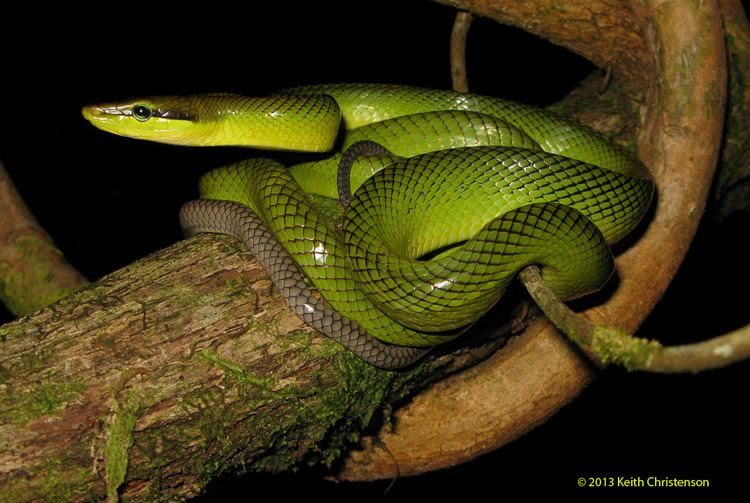 | ||
Similar Gonyosoma, Snake, Reptile, Colubridae, Radiated ratsnake | ||
Red tailed racer gonyosoma oxycephalum bali reptile rescue
The red-tailed green ratsnake (Gonyosoma oxycephalum, also known as arboreal ratsnake and red-tailed racer) is a species of snake found in Southeast Asia.
Contents
- Red tailed racer gonyosoma oxycephalum bali reptile rescue
- Red tailed racer rat snake gonyosoma oxycephalum thailand snake
- Description
- Behavior
- Diet
- Distribution
- References
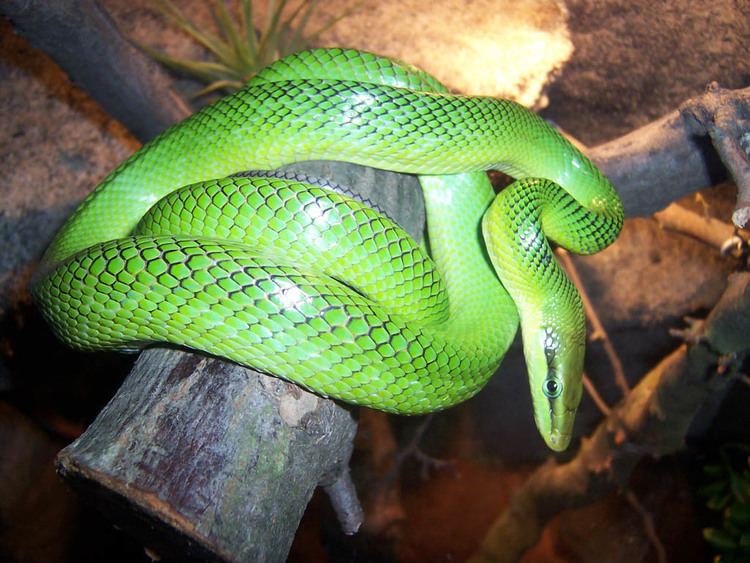
Red tailed racer rat snake gonyosoma oxycephalum thailand snake
Description
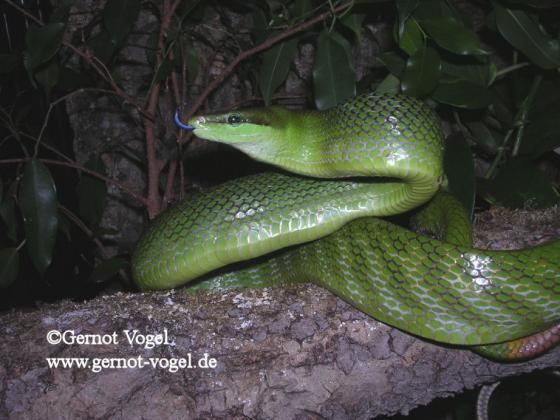
It is a robust snake with powerful, smooth scales on its belly that is ideal for climbing trees and across branches. It has smaller, smooth scales on its back that is usually bright green or light green and may have black net-like pattern. A gray-colored morph with a yellow head exists in Panay, in the Philippines.
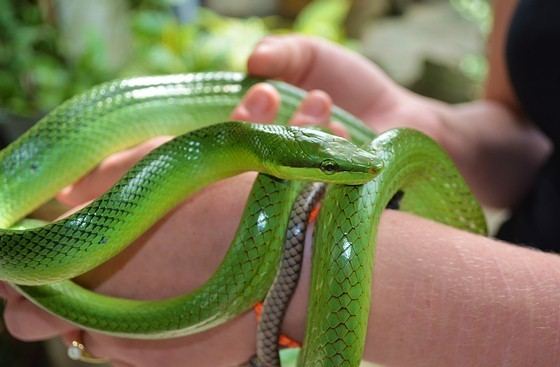
As its name indicates, the snake has a green body with a red tail but is usually brown. It also has a dark line horizontally across its eye. On the sides of its black tongue there may be a Brown and blue colour. The top of the head maybe dark green, yellow-green or yellow in colour.
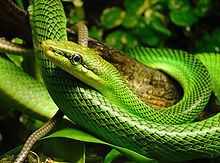
The female can reach a length of up to 2.4 m (almost 8 feet), while the male is generally a little bit smaller but brighter in coloration. Its average life span in captivity is 20 years. It reaches sexually maturity at 4 years of age, and its eggs have a hatching time from 13 to 16 weeks. The female lays on average between 3 and 8 eggs usually between September and January and the hatchlings are about 45 cm (18 inches) long.
Behavior
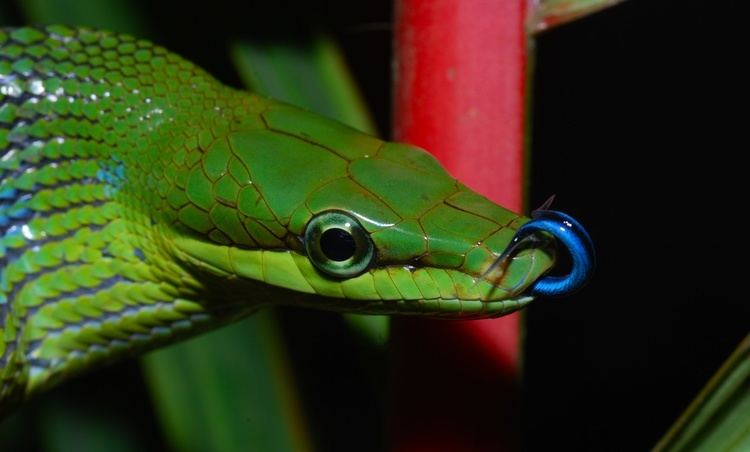
The red-tailed green ratsnake lives and spends its life in the trees and in cavities in trees. It seldom descends to the ground. When the snake is stressed, it may inflate a bag of air in its neck, making it appear larger in size.
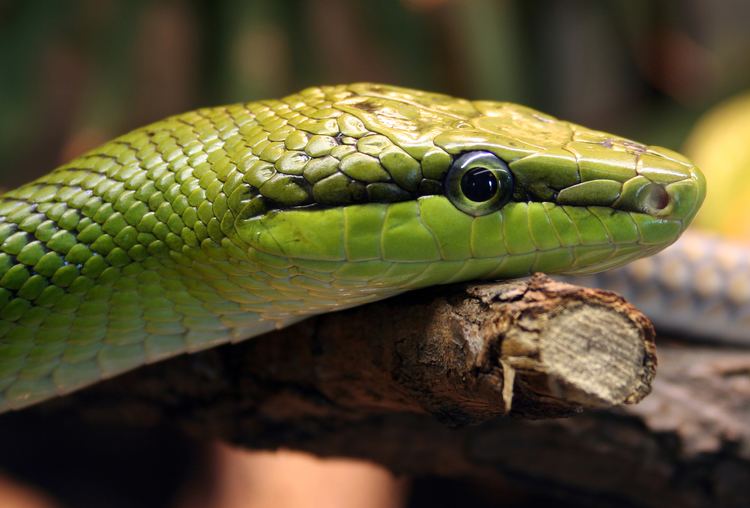
In captivity, it has quite the 'attitude' and may strike at or bite an unwary handler. It's temperament can be unpredictable and may change from time to time but an individual may become tame through proper handling.
Diet
It feeds almost exclusively on birds, bird eggs and bats. It catches them in mid-air while hanging amongst branches. In captivity, it can be trained to feed on rodents such as mice and rats.
Distribution
Type locality Indonesia: Java (Boie, 1827)
